Foods for Health
Air Date: Week of November 21, 2014
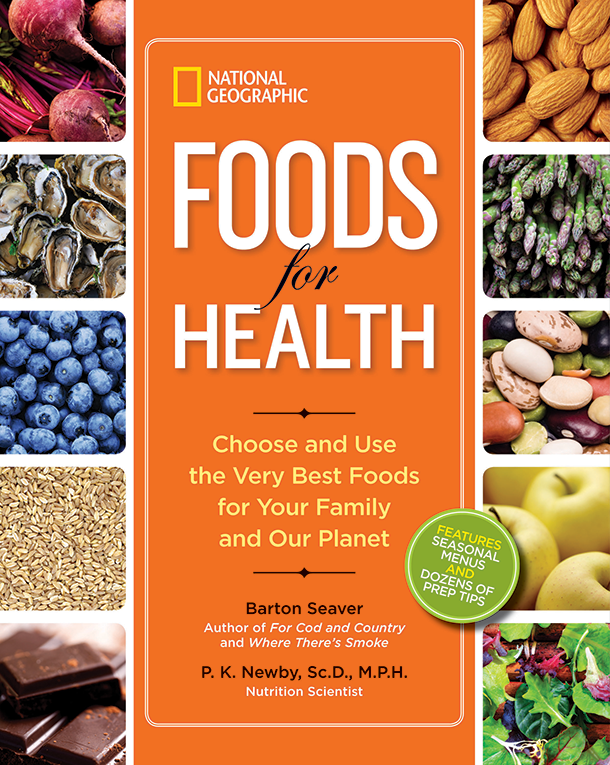
Chef and author Barton Seaver co-wrote Foods for Health—Choose and Use the Very Best Foods for Your Family and Our Planet. (Photo: Courtesy of National Geographic)
Food has the power to heal and sustain, providing nutrients for our bodies and when we enjoy them with friends and family it feeds the soul. With this in mind, celebrity chef Barton Seaver co-wrote a new book called “Foods for Health”. He tells host Steve Curwood how we can eat well, sustainably and mindfully.
Transcript
CURWOOD: Now is the season here in the US when many of us gather with friends and family around a table piled up with traditional and favorite foods, to celebrate and give thanks. Some of those foods will be delicious, some will be healthy and to highlight those that are both delicious and healthy we turn now to celebrity chef Barton Seaver.
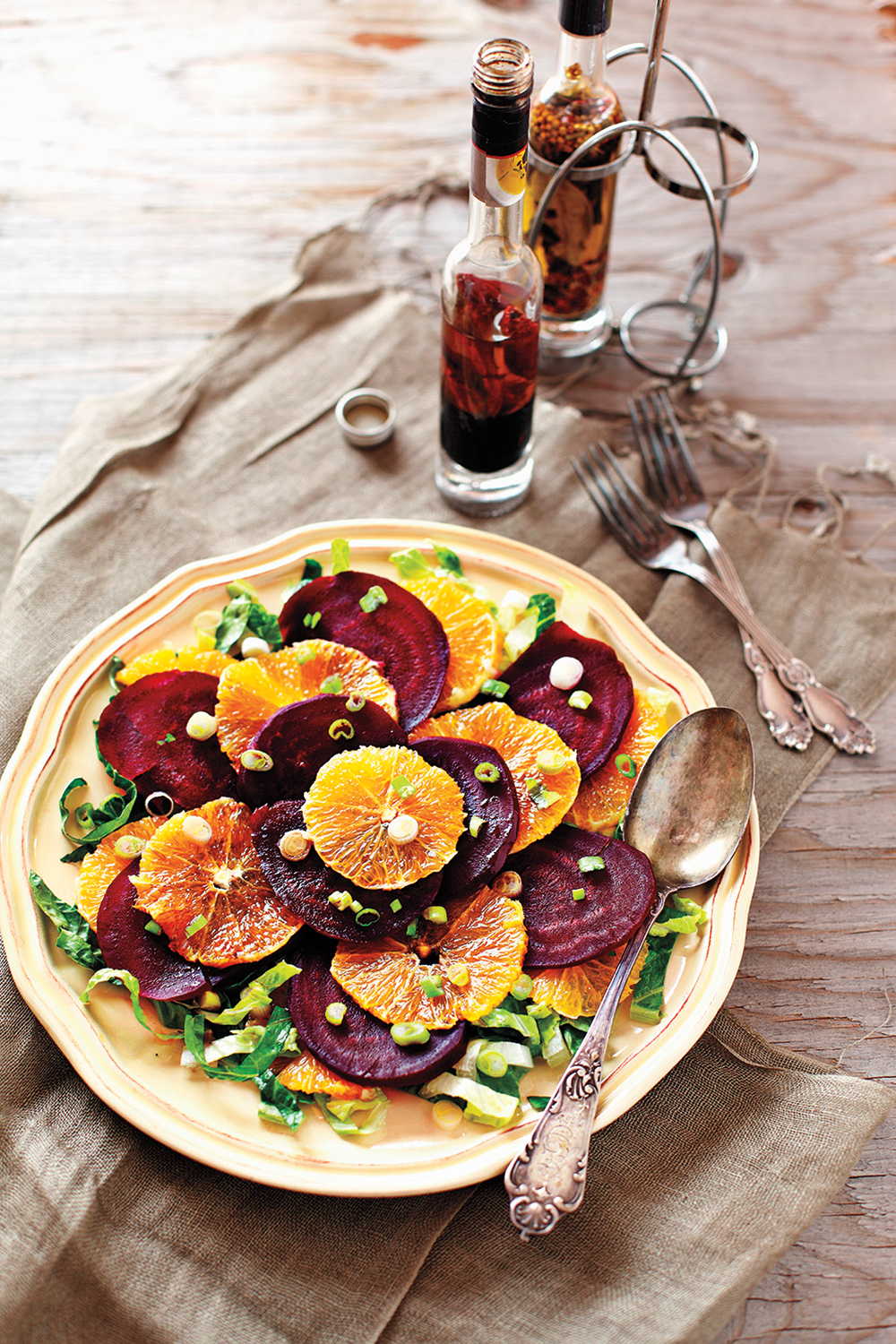
Peel back an orange’s dimpled skin to taste its sweet, fibrous flesh, highly nutritious in its raw form. Chef Seaver uses oranges and fresh herbs for zest and spice in National Geographic’s Foods for Health. (Photo: AnjelikaGr/Shutterstock)
Barton and Harvard nutritionist P.K. Newby have just published a new book called "Foods for Health: Choose and use the very best foods for your family and our planet.” Barton Seaver also directs the Healthy and Sustainable Food Program at the Harvard School of Public Health. Welcome to Living on Earth, Barton.
SEAVER: Hi, Steve, it’s great to be with you. Thanks for having me!
CURWOOD: Foods for health. We think of vegetables, brightly colored things. Am I on the right track here?
SEAVER: Absolutely. Food is the very basis of our health, and I think of the multicolored meals with lots of different vegetables, textures, aromas, tastes, but also it forms the basis of enjoyment. If it's just the same thing over and over again then we are not necessarily on a... destined to be on a path towards health and ultimately food has to be delicious because the only food that is helpful for us is the food that actually makes it into our face. So it's got to be enjoyable too.
CURWOOD: Now, in your book, Barton, you've listed seasonal menus to highlight sustainable healthy foods and how to prepare them in tasty ways. So as we get towards the end of the fall and many places in America actually seem to have stepped into winter, could you explain what you decided to include in your Autumn Splendor menu and why?
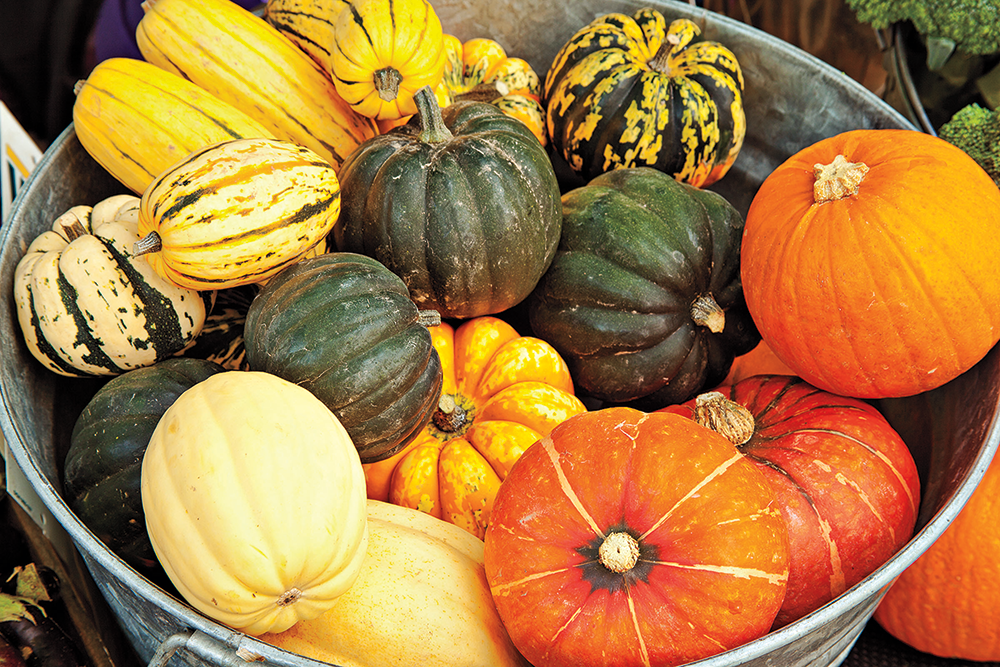
Winter squash plays a large part in autumn and winter menus featured in National Geographic’s Foods for Health. Eating a balanced diet high in vegetables including winter squash can help lower cholesterol, stabilize blood pressure, and support heart and brain health. (Photo: Keith Szafranski/iStockphoto)
SEAVER: Well, Autumn Splendor, I think, it's the most fun time of year to cook by far. It is when you are switching between seasons and you still have just a little bit of summer's bounty left over - those fresh clean flavors that need little adulteration for them to be sexy and exciting - but you're also moving into those deep, rich, robust, soul-warming flavors of squash and this is when food becomes, to me, it's most effective in that we nourish our bodies with far more than calories when we sit down to a meal and especially around the holidays I think we are most acutely aware of that. And that to me is the splendor of autumn.
CURWOOD: Now, you start with spice mulled apple cider.
SEAVER: When people walk into the house they should immediately feel as though they're being welcomed, and filling the house with that sweet slightly bitter warm spice aroma of mulling ciders, you know there's no more generous welcome then that.
CURWOOD: Now what about the salad?
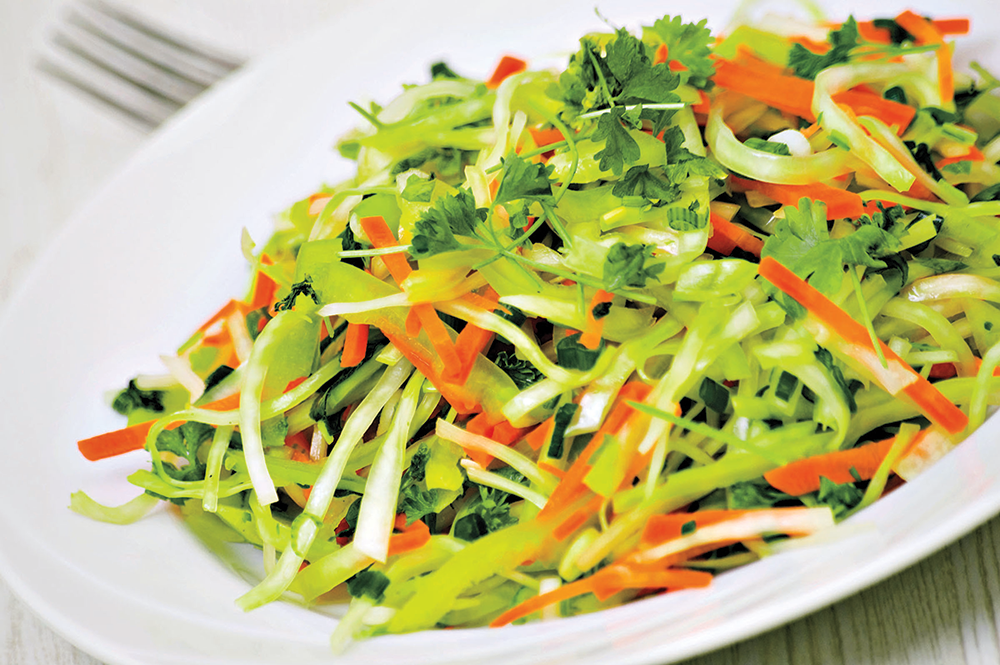
Classic coleslaw recipes tend to drown shredded cabbage in a sea of mayonnaise, which adds a lot of extra calories and dilutes the crunch and flavor cabbage provides. National Geographic’s Foods for Health suggests substituting a smaller amount of nonfat Greek yogurt for the mayo for a change. Sliced cabbage can also be served simply with vinegar and, if left to sit, will quickly pickle for an interesting side dish. (Photo: Siamionau pavel/Shutterstock)
SEAVER: The roasted squash panzanella, and this harkens back to an Italian tradition where you use day-old bread, you mix it in with vinaigrette and moist roasted vegetables and nuts and raisins or something like that. It really provides a hearty filling and yet interesting component to a meal that's a little bit unexpected, and it offers us an opportunity to really introduce vegetables and that allows for a healthier meal all throughout.
CURWOOD: Alright, let's move on now to the entree, and I'm really getting hungry.
SEAVER: Coming into the fall we often think of turkey, roast turkey, roasted chicken, beef stews, but mixing it up a little bit with something I love to do, quinoa cakes. Simply boil the quinoa down until it's nice and soft and mix it with a little bit of breadcrumbs, maybe an egg yolk, and then sauté those up in a little olive oil and butter and then serve those alongside roasted sweet potatoes with the aromatic lovely crunch of a cilantro almond pesto, and then put it on the side with a little bit of sweet bitter component such as the braised broccoli with raisins and almonds. The raisins to add sweetness, balancing out that brassica bitterness and then the almonds adding crunch to the entire dish.
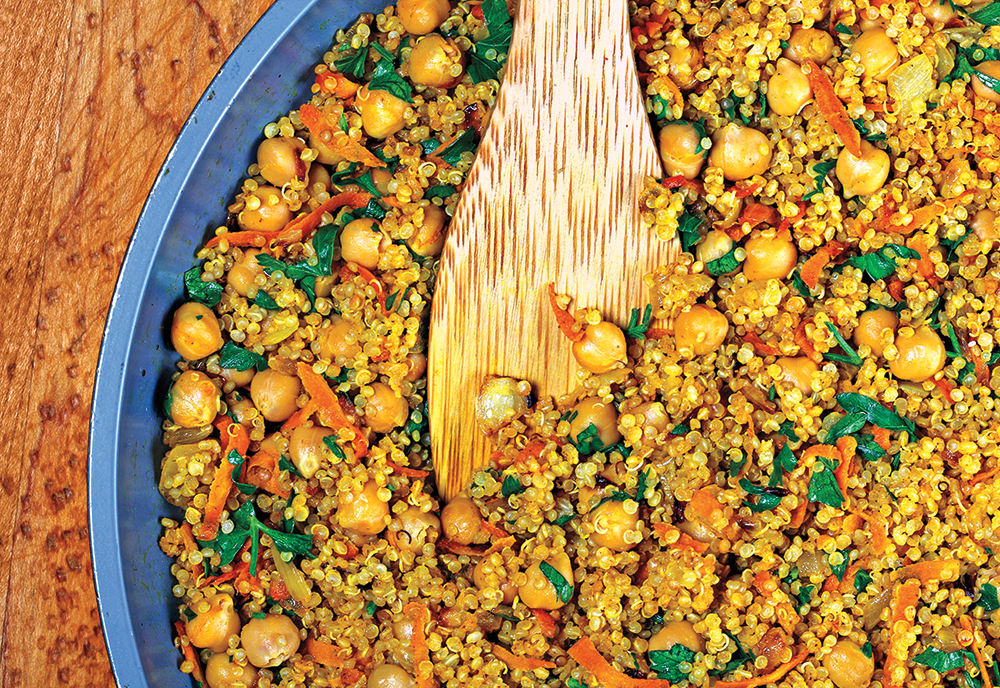
National Geographic’s Foods for Health highlights quinoa. Highly sustainable, quinoa has become immensely popular in recent years, and 2013 was called the International Year of Quinoa by the Food and Agriculture Organization of the United Nations. This indigenous and sustainable crop includes all of the essential amino acids, making it a “complete” protein. (Photo: alexsvirid/Shutterstock)
CURWOOD: OK. By this time, I guess we would be ready for dessert.
SEAVER: Desserts that I like to serve in the fall are taking advantage of just the wonderful bounty of fruits that we have such as baked apple, cored and then stuffed with a little bit of sweetened Greek yogurt and then topped with a little bit crunchy granola. And this is healthy, this is delicious, and, wow, this is satisfying as well.
CURWOOD: Barton, in your book you mention turkey as a good source of protein. What's a good turkey?
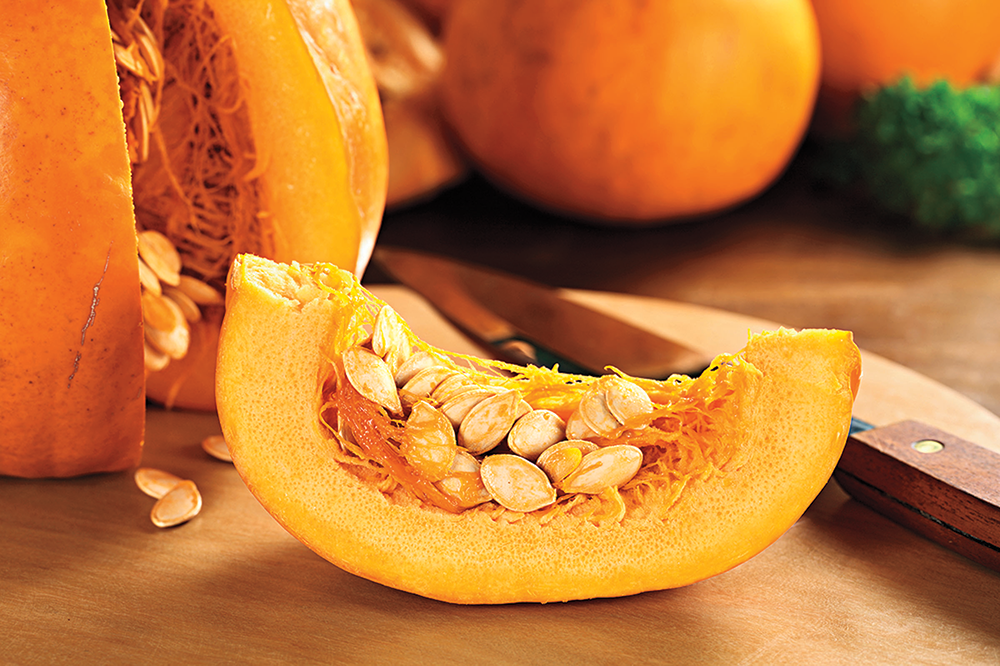
Roast pumpkin seeds yourself or purchase unsalted ones. Seaver points out in this new book National Geographic’s Foods for Health that pumpkin seeds have about as much protein as almonds. (Photo: Ildi Papp/Shutterstock)
SEAVER: Well, a good turkey is one that's raised in a natural way. We eat turkey in America very rarely, but for one occasion, and when that turkey hits the table we have this very Norman Rockwell vision of this incredible round bird, plump breasts, large meaty legs sticking out perfectly trussed with a golden brown crackly skin. Well, that's not what the bird looks like in nature and so the farming techniques that are used typically tend towards creating a product that looks good on the table. And in order to achieve the aesthetic we desire on the table we have to sort of visit a number of abuses on those turkeys, from incredible density in the farming operations which leads to disease vectors, therefore, necessitating antibiotic use, growth hormones to plump those breasts, and so I think the opportunity here is really, as Americans, to shift our expectations of what we expect our food to be. Do we expect it to be aesthetically perfect? Something that doesn't really exist in nature, or do we want to really celebrate what that animal should be?
CURWOOD: So how should we select and prepare turkey?
SEAVER: Well, I think that there is a rising popularity and availability of heritage breed turkeys, Red Bourbon turkeys, various breeds that have been farmed for centuries, and these birds all have intricate nuanced flavors much like heirloom tomatoes, they all taste different. And these birds also have slightly different sort of physical characteristics, small slender breasts, meaty big rich thighs and legs that are actually meant to carry the turkey around. And because that bird is not as meaty and plump and rich as the other birds that you commonly find in the supermarket, well, guess what? That leaves plenty more room for all those delicious vegetables and sides that fill up the table, that to me are the best part of Thanksgiving, and are also the healthiest part.
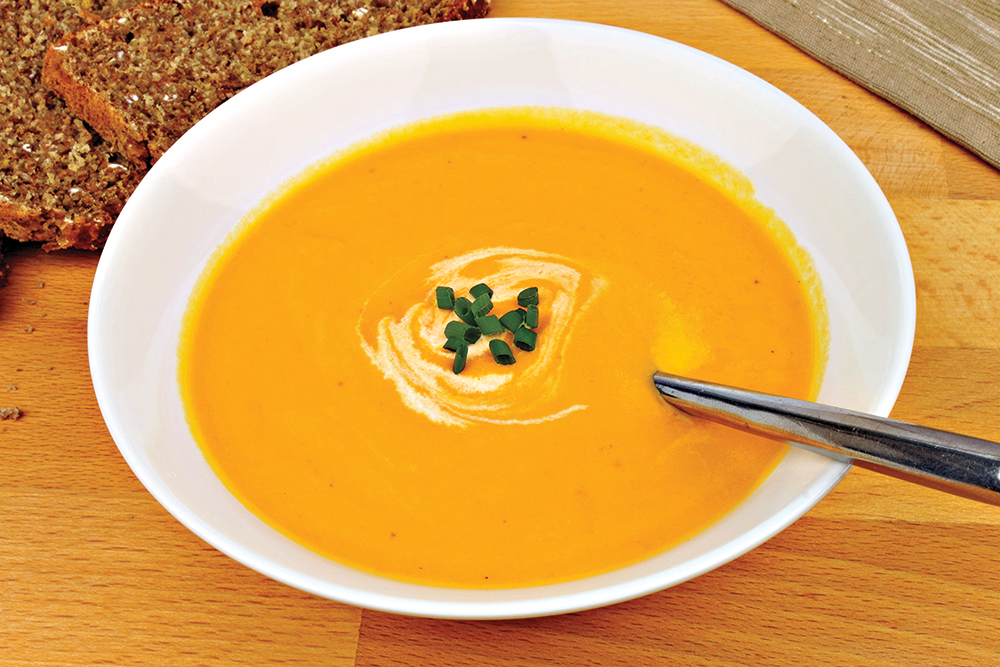
In National Geographic’s Foods for Health, Seaver notes that each winter squash has a distinct flavor—experiment to find the ones you like best. (Photo: spectrumblue/Shutterstock)
CURWOOD: So whether you live in the city or the country, come the end of the summer harvest season sometimes hopefully there's more than you can eat. How you feel about frozen vegetables?
SEAVER: I grew up on frozen vegetables - that was part of the fluency I learned as a child that allowed me to pursue a career in food. And dinner was 365 nights a year and it was cooked from scratch, and more often than not it was Jolly Green Giant vegetables frozen out of the bag, you know, peas, but my dad understood what a little bit of salt and a tiny pat of butter could do for a vegetable and so if that's the cost structure you're operating on...fabulous. Just eating vegetables is a great start to ameliorating the diets in America that are currently not doing us any favors.
CURWOOD: Tell me, what menus are you planning for the holidays?

Barton Seaver is an executive chef, Director of the Healthy and Sustainable Food Program at the Center for Health and the Global Environment at the Harvard School of Public Health, and co-author of National Geographic’s Foods for Health.
SEAVER: Well, we’ve got a farm right down the street the raises heritage turkeys. We got a turkey that’s probably a little too big for the number of people we're serving, but my whole thing is the sides, that mashed sweet potatoes with the little bit of orange juice in there to give it a little aromatic punch topped with a little bit of pecans, and maple syrup, and spicy broccoli, caramelized celery, walnuts and cranberry sauce to go alongside of it, plenty of light bright red wine like a Beaujolais or Pinot Noir, oyster stew, you name it. This is a chance to do exactly what Thanksgiving was designed to do, to give us a moment of reflection, celebration of the bounty we're so fortunate to have. Since I live on the coast of Maine, I'll probably be throwing a lobster or two into my dinner.
CURWOOD: Barton Seaver is a chef and Director of the Healthy and Sustainable Food Program at the Harvard Center of Global Health and the Environment, and his new book is called "Foods for Health" which he wrote with nutritionist P.K. Newby. Thanks so much for your time today, Barton.
CURWOOD: Oh, it's such a pleasure, Steve, thanks for having me on.
Links
Living on Earth wants to hear from you!
Living on Earth
62 Calef Highway, Suite 212
Lee, NH 03861
Telephone: 617-287-4121
E-mail: comments@loe.org
Newsletter [Click here]
Donate to Living on Earth!
Living on Earth is an independent media program and relies entirely on contributions from listeners and institutions supporting public service. Please donate now to preserve an independent environmental voice.
NewsletterLiving on Earth offers a weekly delivery of the show's rundown to your mailbox. Sign up for our newsletter today!
 Sailors For The Sea: Be the change you want to sea.
Sailors For The Sea: Be the change you want to sea.
 The Grantham Foundation for the Protection of the Environment: Committed to protecting and improving the health of the global environment.
The Grantham Foundation for the Protection of the Environment: Committed to protecting and improving the health of the global environment.
 Contribute to Living on Earth and receive, as our gift to you, an archival print of one of Mark Seth Lender's extraordinary wildlife photographs. Follow the link to see Mark's current collection of photographs.
Contribute to Living on Earth and receive, as our gift to you, an archival print of one of Mark Seth Lender's extraordinary wildlife photographs. Follow the link to see Mark's current collection of photographs.
 Buy a signed copy of Mark Seth Lender's book Smeagull the Seagull & support Living on Earth
Buy a signed copy of Mark Seth Lender's book Smeagull the Seagull & support Living on Earth

